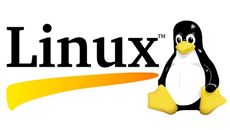- Delivery Method Online
- Professional Certificate
- 24hrs Suggested Study Time
- 3 Months Access
- Tutor Support
- Study On Any Device
- 14195 Students
Networking Fundamentals

Learn the fundamentals of networking and prepare for a career in a new and fast-growing field.
Introduction to Networking explains computer networking basics in terms that you can easily understand, using concepts common to everyday, non-computing experience. A brief introduction to networking history provides context, explaining how networks have become so important to businesses and individuals. The course emphasises networking fundamentals, explaining the software and hardware that makes networking possible. The course stresses understanding how and why networks work, rather than focusing on memorization of terms or numbers.
Upon completion of the course, you will be capable of performing basic computer networking tasks, such as DSL connectivity or configuring connections to an Internet Service Provider. This course will give you the foundation you need to begin training for CCNA Certification or employment in a computer networking career.
Courses are delivered to you through expertly executed lessons, online instruction and interaction with like-minded students. Our courses are designed to deliver all of the benefits of studying in a classroom whilst giving you the flexibility to study at a time and place to suit your needs. You can access your classroom 24/7 from any device with an internet connection.
This course has a 3 month duration. You'll complete comprehensive lessons, quizzes and assignments before submitting your final exam at the end of the course to achieve your certificate. Courses must be completed within the 3 month access period.

David Iseminger
David Iseminger is a computer and networking expert and an experienced teacher of networking topics. As a student first and expert second, Iseminger knows which teaching approaches are most effective. Iseminger has worked at Microsoft Corporation ... Read more
Read David Iseminger's ProfileFrequently Asked Questions
What people are saying about our courses
The Learning Environment
From the moment that you enrol in the Networking Fundamentals you will become an integral part of our learning community. You'll find yourself with the freedom to learn at a speed that suits you, on any device, from anywhere in the world. Achieving your career goals no longer has to mean compromising family and work commitments.
Ready to get started?
Enrol NowOur Values
Learn At Your Own Pace
We believe in personalised learning. That's why we provide all the tools and support you need to succeed at your own pace. With flexible learning, you'll stay motivated and retain more information. Plus, you can balance your studies with work and family commitments to make your dreams a reality.
We Won't Break The Bank
Education should be accessible to anyone who wants to learn. That's why we offer some of the most competitive prices in the industry with payments plans for just $25 per week. Investing in your future is a smart choice and doesn’t have to break the bank.
Industry-Led Courses
There's no better way to learn than from experts with years of experience in your field. That's why each of our 200+ industry-led courses are designed to give you a real-life perspective on your industry. With our expert mentors, you'll learn from people who have a wealth of knowledge and experience, and who are passionate about sharing it with you.
Get The Personal Support You Deserve
At Vibe Learning, we're real people who are dedicated to providing you with personal support every step of the way. Our industry experts are not only professional and knowledgeable but also incredibly passionate about sharing their expertise with you. With their guidance, you'll gain invaluable insights and practical knowledge to help you succeed.
Still looking?
Check out the following courses related to Networking Fundamentals:





